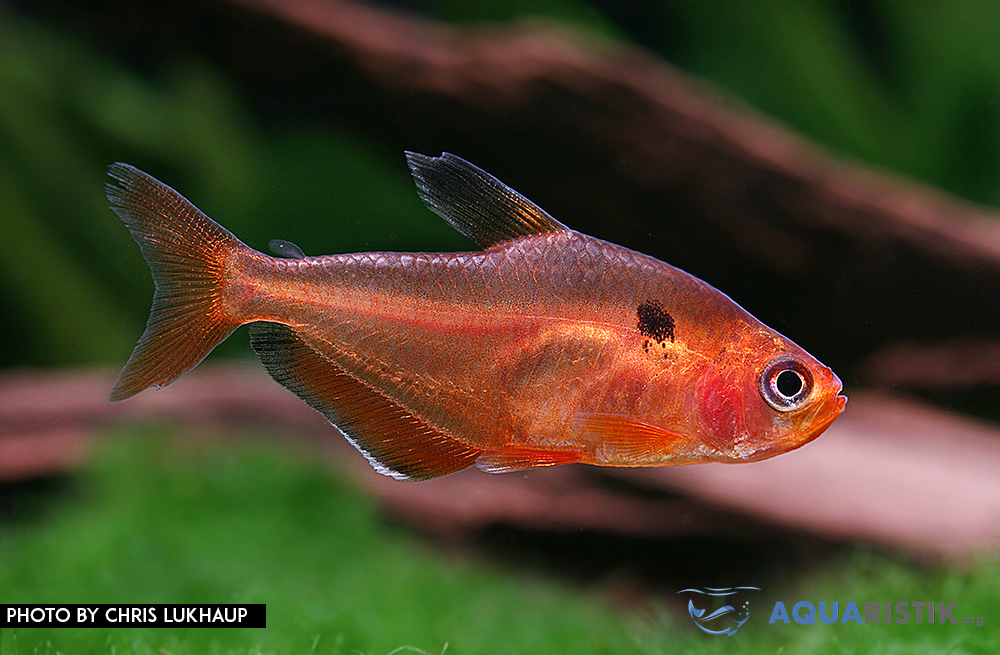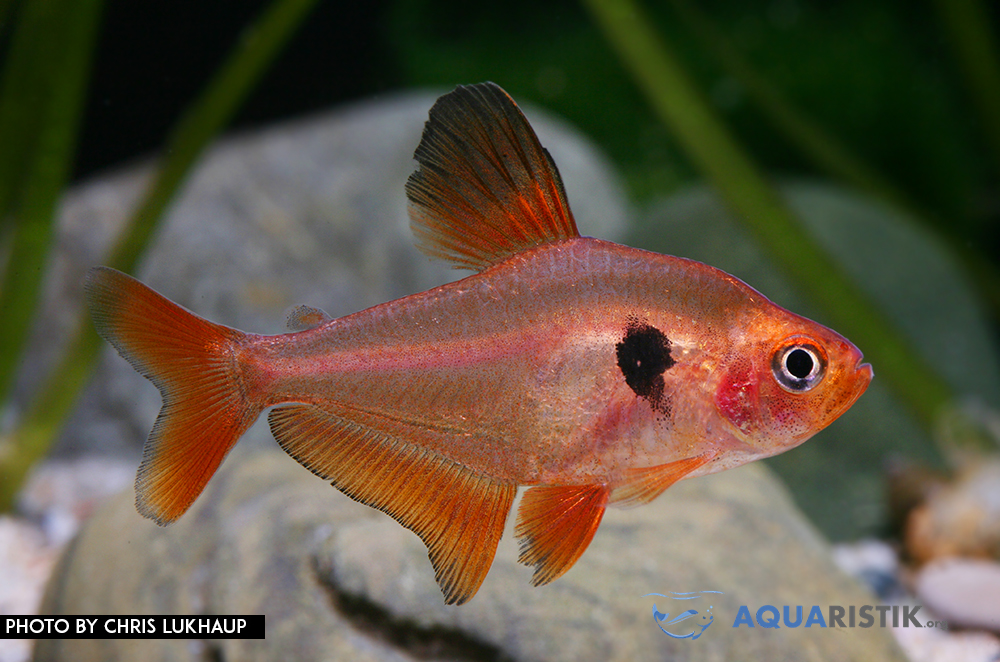Characteristics Blood tetra Hyphessobrycon eques or often also called Serpasalmler. The older Latin spellings such as Hyphessobrycon callistus or serpae can also be found. Today, however, it only bears the name blood tetra Hyphessobrycon eques. However, there is a risk of confusion with the jewelry tetra or rose tetra. So that this does not happen to you, we explain them here characteristics and Appearance of this particular fish. Also the Care and attitude can be found in the following profile. Lazy readers can simply concentrate on the green box.

Origin of the blood tetra Hyphessobrycon eques
As with the other tetras, this spray comes from South America. There it has spread mainly in Brazil, Argentina, Paraguay and Bolivia and inhabits rivers such as the Rio Guapore, Rio Paraguay and also the Rio Parana. In other parts of the world, such as French Guiana, humans introduced it, so that one cannot speak of its original origin here.
As you can easily see from the rivers, the blood tetra Hyphessobrycon eques lives mainly in black water. The Amazon Basin area is full of these rivers and many tributaries. The ornamental fish can be found especially in the shore areas. He loves muddy areas and also likes it when there is lush vegetation. The blood tetra can also be found in the lakes of the Amazon basin. As always, this species of tetra is a pure freshwater fish. In English one can also read its name as follows: Serpea or Jewel tetra.
Characteristics and appearance of the blood tetra Hyphessobrycon eques
Now we come to the appearance of the fish. The Build has compared to that Red-headed Tetra or Tail light tetra a rather high-backed form. Therefore, the body is also a bit stockier. Much more important, however, is the color of the fish, because this is what makes this tetra so special.
The blood tetra Hyphessobrycon eques is easy to see in the pictures
a real highlight and an eye-catcher in the aquarium. The basic color is reddish and comes into its own with a certain amount of lighting. The fins, i.e. the dorsal fin and the caudal fin, are correspondingly reddish, almost ruby red in color. There is another highlight with the lower fin, because there the fin goes from the middle of the body to the caudal fin and also has a reddish coloration. In addition, some specimens may have a white border around the outer edge or hem. Another highlight of the fish.
Compared to other tetras with a similar physique, the blood tetra Hyphessobrycon eques also has a black drop-shaped dot in the front part of the body. This allows him to be assigned very well.
When distinguishing between males and females, the males have a rich coloring as does the females. In addition, the women are fuller and a little larger. Blood tetras are usually around 4 cm in size and can live up to 5 years.
Keeping and caring for the blood tetra Hyphessobrycon eques
Let us now come to the husbandry of the animals, because here a number of things should be considered. Less as far as the water values are concerned, but rather as far as the behavior of the ornamental fish is concerned. The size of the aquarium should be chosen so that you can keep 8 animals or more. They need plenty of space, otherwise the blood tetras can tend to be aggressive. The more space you have, the less of a problem this becomes. We therefore recommend an edge length of at least 80 cm. 100 cm or 200 liters are better. Groups of 10 or more animals can also be kept here.
You should also pay attention to good planting. Floating plants are also beneficial here. If the animals are kept with fewer specimens, they tend to be shy and like to hide.

There can be aggressive behavior among the conspecifics themselves or towards other fish. This is usually expressed with biting and fin plucking. The males, in particular, show territorial behavior when they are older.
When setting up, you should avoid using too bright a light. In addition, you should also prefer a dark substrate.
The temperature must also be in the range of 22 to 28 degrees. The PH value and the overall hardness can be left in the soft and acidic range. Values between 6 and 7,5 in the PH range are perfectly fine.
Perhaps a word about nutrition before we get to the actual profile. As with almost all tetras, they also eat any kind of flake food and dry food. Nevertheless, one should also like live food Artemia or mosquito larvae enough for the animals. In addition, frozen food such as Tubifex is also popular.
- Up to 4 cm tall
- Tanks from 80 cm or better 200 liters
- Ph value of 6 – 7,5
- Gh to 15
- Temperature of 22 – 28 degrees
- Shoal fish from 8 fish
- Dense planting
Breeding and reproduction of the blood tetra Hyphessobrycon eques
Let's now come to breeding, because this is not very easy with blood tetras. First you have to prepare a breeding tank accordingly. The water values in particular play a major role here. On the one hand, the tank should be a little lower and also be well planted. Here, too, fine-leaved plants are advantageous. The temperature of the water should be raised to around 28 degrees and the PH value should also be increased. This also encourages the fish to mate and spawn faster. However, this is not easy and usually requires a lot of patience. Good feeding with frozen food and live food is effective.
Once the animals have spawned, both should be removed from the aquarium because these free spawners also like to eat their eggs and larvae. The animals hatch after just one day, but are not yet free swimmers. First the yolk sac must be used up. This can take around 4 days. Then the young swim freely and you have to feed them accordingly. Artemia nauplii or Cyclops crabs are used for this.



